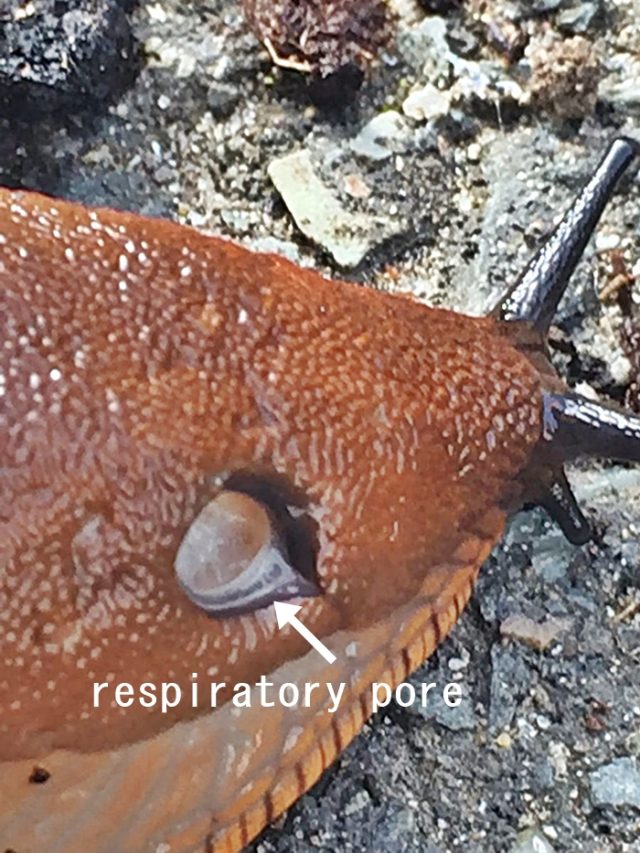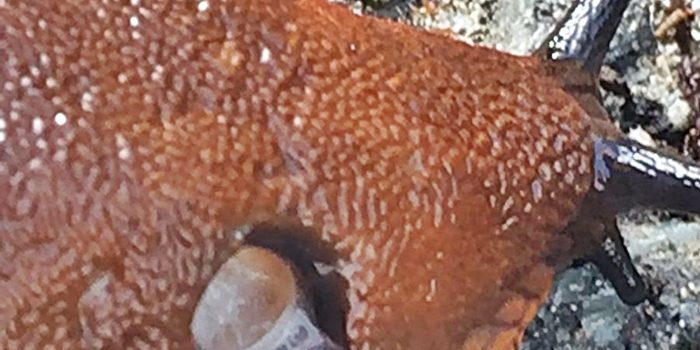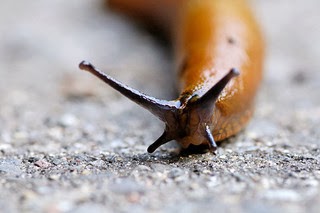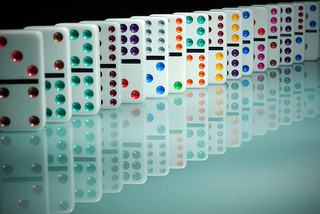I am getting lots of questions from three and four year old children lately which I love, it seems they all hold a communal fascination with slugs and snails and the working of both.
I hear that a little lady who can often be found here wants to know….” Do slugs have eyes?” and two little ladies that can be found here want to know if they have ears and noses too. My own son asked me the other night as I put him to bed… “What are slugs made of?”
I thought it only fitting, among all this slimy fascination to dedicate the whole week to all things slug and snail like. I have been sharing some facts and photos on my face book page!
So in today’s blog I will try to answer some of these Junior Scientists’ questions and hopefully add a few more facts to further inspire them.
First up… do slugs have eyes and if so where are they hiding them?
Slugs (and snails) do have eyes, two of them, they sit on top of two tentacles (called eye stalks) on the top of their heads! They do not see colour and form as well as we do but they can still make out shades of light and dark. Although the eyes are well developed they do not have a complex method of focus.
They can retract their eye tentacles to protect their eyes from potentially harmful touch.
What about their ears and noses?
Slugs and snails do not have ears and a nose like we do but they can still smell and they can detect some sounds through vibration. They use either their eye tentacles or two smaller tentacles below the eye tentacles for these senses. The lower tentacles are also important for sensing taste and touch.
If a snail or slug looses any of these tentacles they can regrow it!
What is the difference between a slug and a snail?
Slugs and snails are effectively the same except that snails have an obvious shell and slugs do not. Some slug species may have a small vestigial shell or an internalised shell but most have no shell at all. Slugs do not require calcium in their diet whereas snails do in order to maintain a healthy shell.
Both slugs and snails belong to a group of animals called mollusks. In fact they are very successful creature, being listed as the second most abundant species on Earth. Found in almost all habitats and temperatures, they are most affected by harsh winds and very dry conditions.
What are slugs made of?
Slugs (and snails) are mostly made up of water! Their soft bodies are covered in a thick sticky mucous. They breath into a single lung through a pore on the skin and have a mouth part under the tentacles. They “eat” their food by extending a tongue like organ called a radula from their moth. The radula is very rough as it is covered in tiny tooth like protrusions. The radula breaks up the food by rubbing it.

Photo Credit: Betty Kehoe of aislingdesigns.ie
Although slugs and snails do not have complex brains they are still able to analyse and respond to stimuli through a series of nerves bundles.
Why do slugs come out after rain?
Most land slugs and snails are noctural but they will often come out after rain as they prefer damp conditions. Not only do these conditions help them to move around but they also stop them from suffering dehydration.
Slugs and snails have no legs for walking, instead their bodies ripple and slide along on a film of slime that they make themselves. They have a “foot” on the underside of their bodies that rhythmically contracts and relaxes a series of muscles that provide the rippling effect. They secrete a thin light mucous to reduce the friction between the foot and the surface, allowing them to glide along. An efficient but slow method of getting from place to place.
Slugs and snails also produce a thicker mucous that covers the whole body, acting like a thin armour that protects the slug from severe weather as well as keeping dirt and harmful germs out of the body.
Are all slugs and snails bad for the garden?
Despite their bad reputation not all slugs and snails are only out to eat your prize cabbages! Many eat dried organic matter such as dead plant parts and leaves, thus contributing positively to the ecosystem and returning all their nutrients to the soil. Some are carnivores or omnivores, eating small insects or even other small slugs and snails.
If you are fed up with your garden varieties munching through your veg path here is a
good link to help you get rid of them without any harsh chemicals.
If you want to find out more fun facts about slugs and snails, such as “How strong are they?” and “Who would win in a race – a slug or a snail?” then check out the Facebook page for daily posts!
I hope this answers some of your questions on slugs and snails, or more importantly, I hope it satisfies the curiosity of your junior scientist for a little while. If you have any other questions, comments or fact please leave them in the comment below, I always love to hear from you!























